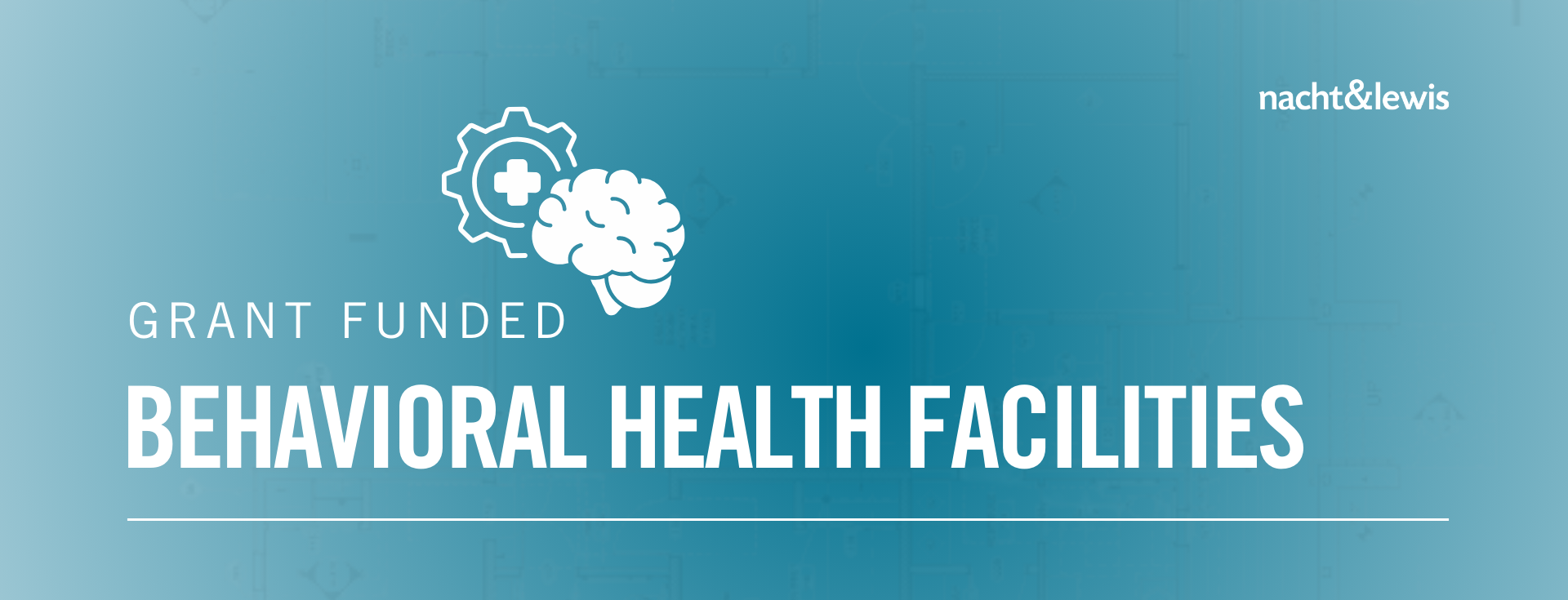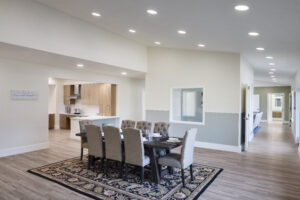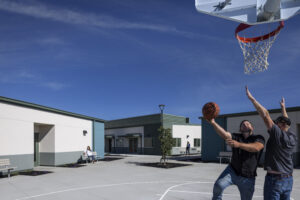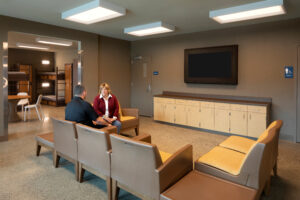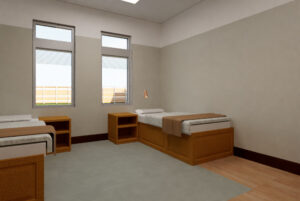At Nacht & Lewis, we’re deeply invested in projects that support behavioral health, especially those focused on diversion, reentry, and community-based programs. Established in healthcare and justice architecture, we’re actively shaping the next generation of behavioral health facilities.
Our experience involves medical facilities that provide emergency services and acute psychiatric care and justice projects that integrate healthcare and behavioral health, including county and state correctional projects. We’ve designed over a dozen ground-up mental health housing and outpatient facilities for the California Department of Corrections and Rehabilitation (CDCR); all were subject to OSHPD (now HCAI) requirements and were essential hospitals within the CDCR campuses.
Our work includes:
- Specialty housing jail additions in Amador and Mendocino County are under construction.
- A multi-story intake and healthcare addition to the Sacramento Main Jail featuring a clinic, infirmary, and dedicated mental health housing.
Historically, behavioral health funding has been concentrated on in-custody care, but that’s changing. The state now prioritizes out-of-custody facilities that reduce the demand for in-custody services, offering new opportunities to expand community-based care.
Community-Based Behavioral Health
We’ve had the privilege of working on several groundbreaking behavioral health projects, including:
- Crisis Residential Treatment Facility (CRT), Ukiah, CA: Designed as the state’s only fully ADA-compliant facility with a home-like setting while balancing the need for anti-ligature design and operational efficiency.
- Mental Health Diversion Facility, Fairfield, CA: A semi-secure campus with two 16-bed residential units with an administration and program building that includes inpatient and outpatient services.
- Psychiatric Health Facility (PHF), Mendocino County: A secure 16-bed facility. It is a super PHF licensed under the California Department of Health Care Services providing office space for the National Alliance on Mental Illness.
- Napa County Staff Secure Transitional Housing Facility, Napa, CA: Originally designed for reentry programming, this facility is now being considered for diversion programs. A recent grant application aims to repurpose it as a Mental Health Rehabilitation Center, Sobering Center, and Residential Treatment facility including withdrawal management.
- Santa Barbara County Crisis Residential Treatment Centers: We assisted in programming and concept design for two 16-bed facilities as part of a grant application for state funding. Similar to the Napa County project, the concept and estimate were provided to the county as part of their Grant Application for Behavioral Health Continuum Infrastructure Program (BHCIP) funding through the California Department of Healthcare Services.
While these projects are essential, they come with significant challenges that many counties and stakeholders may not fully anticipate. A few key considerations include:
- Regulatory Compliance: These are public buildings subject to strict accessibility compliance —hardship exemptions don’t apply, meaning full compliance is required.
- Healthcare & ADA Requirements: Facilities with public kitchens must meet both Department of Health regulations and ADA standards, which can be difficult for fixtures like three compartment sinks.
- Anti-Ligature Design: Behavioral health environments require specialized furniture, fixtures, and detailing, which can significantly impact project costs.
- Licensing Standards: Psychiatric Health Facilities (PHFs) seeking licensure—and potential Medicare funding—must meet specific requirements under the California Department of Health Care Services.
- Construction Standards: Secure facilities are often required to meet costly Type I construction standards, with limited exceptions for single-story buildings requiring complex fire wall designs.
- Fire & Life Safety Compliance: Essential for risk reduction and smoother agency approvals.
The Future of Behavioral Health Projects
As grant funding fuels new behavioral health initiatives, many counties are navigating the complexities of project delivery for the first time. These projects demand experienced design teams that understand the nuances of agency approvals, construction regulations, and funding constraints. Much like the early days of state jail funding, success hinges on selecting architects and engineers with specialized expertise in this space.
At Nacht & Lewis, we’re committed to supporting counties and architecture and engineering firms in navigating these challenges. Whether it’s understanding funding requirements, evaluating project delivery methods, or designing facilities that balance security with care, we’re here to help.
If you’re exploring grant-funded behavioral health projects, let’s start the conversation.

